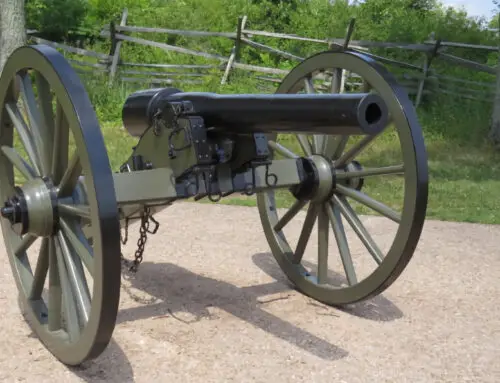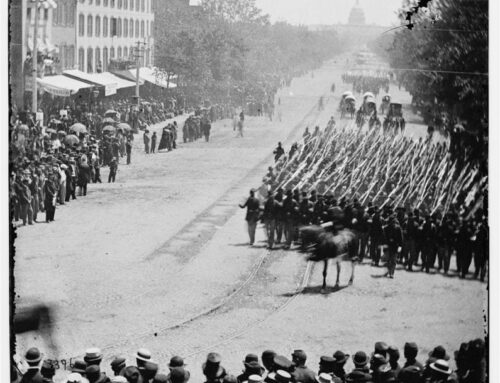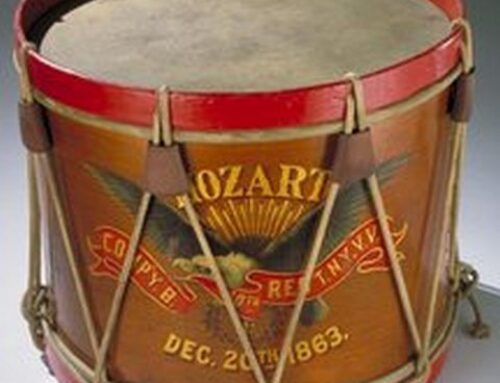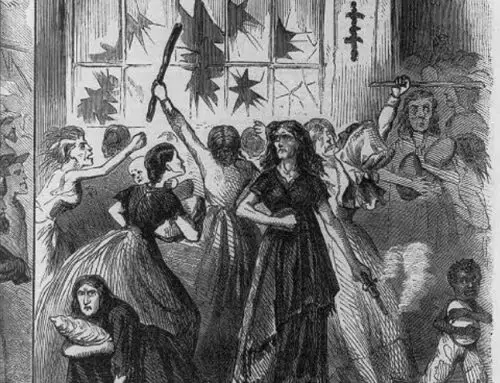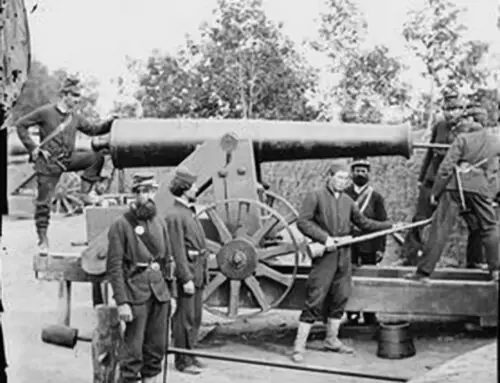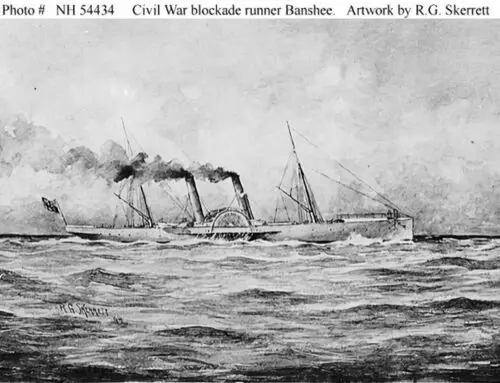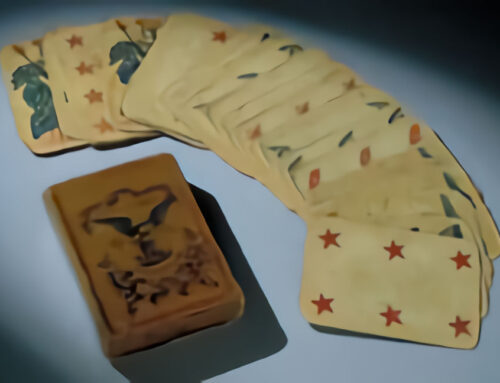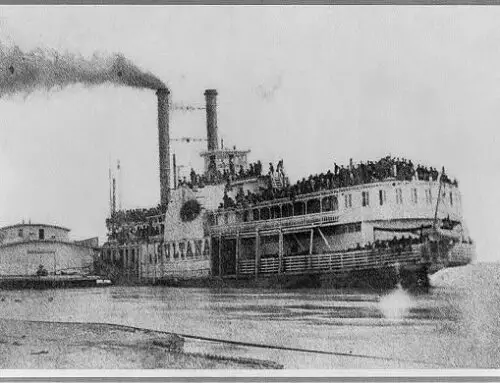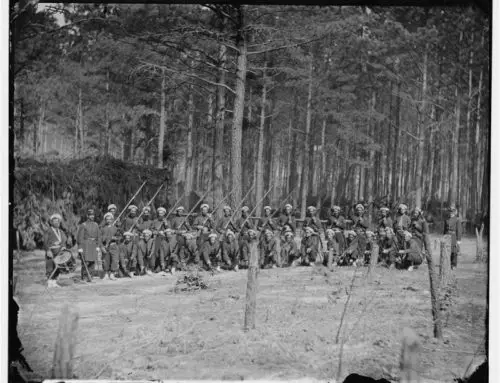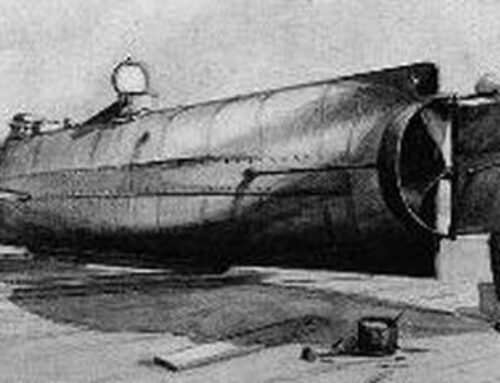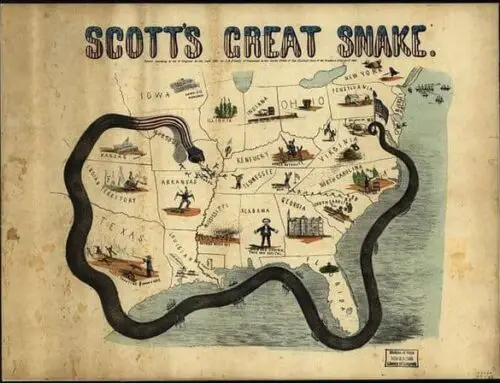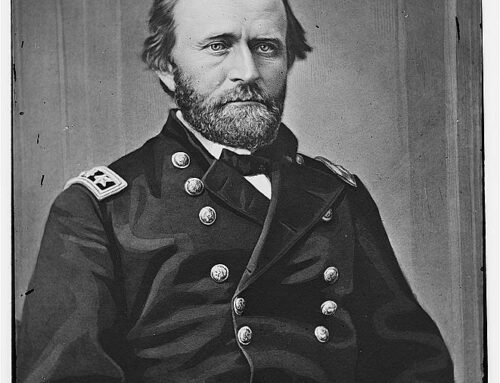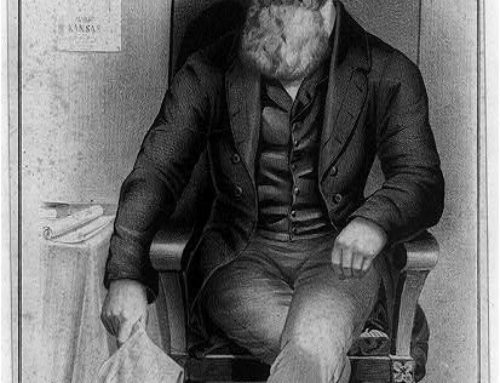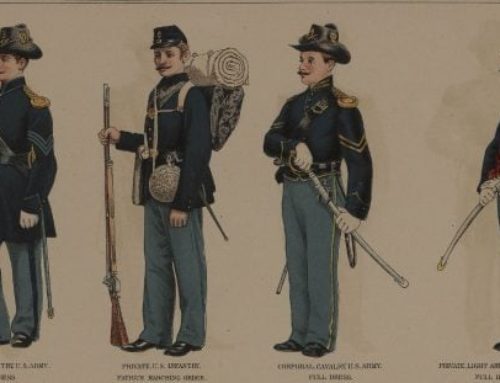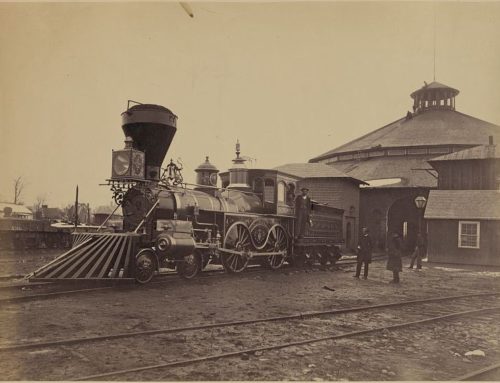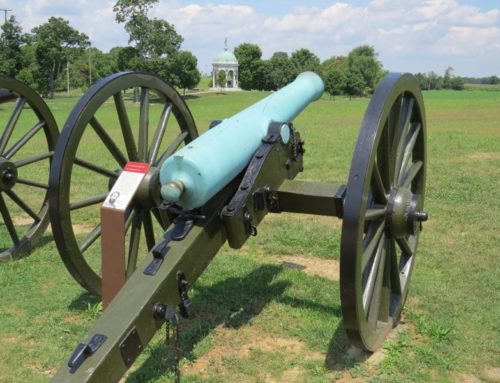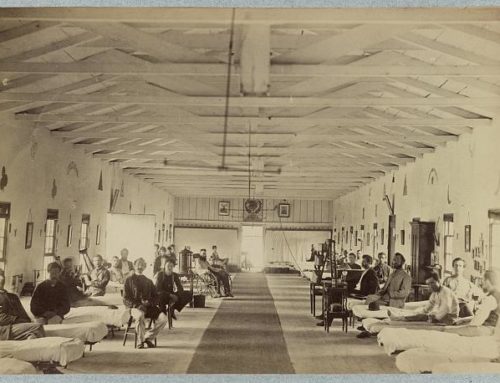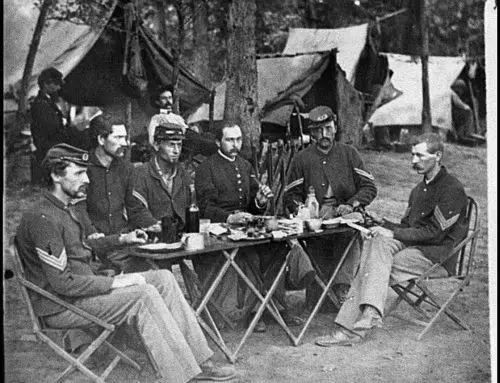(1821-1912)
December 25, 1821: Clarissa Harlowe Barton is born in North Oxford, Massachusetts, the youngest of five children of Stephen and Sarah Stone Barton.
1825 – 1836: Gains an education by attending local schools and home tutoring from older brothers and sisters.
1833 – 1835: Cares for brother David Barton, injured and bedridden following a fall from a barn roof.
1836: Noted phrenologist L. N. Fowler advises Clara Barton’s parents to have her teach school.
May 1839: Passes examination and begins teaching career in district schools near Oxford, Massachusetts.
1845: Establishes a school for the children of her brothers mill workers.
April 19, 1846: Sister, Dorothea (Dolly) Barton, dies.
1850 – 1851: Spends a year furthering her own education at Clinton Liberal Institute, Oneida County, New York.

Clara Barton in 1850. She is 29 years old
July 18, 1851: Mother, Sarah Barton, dies.
October 1851: Travels to Hightstown, New Jersey to visit school friend, Mary Norton, and resumes teaching school.
1852 – 1854: Establishes first free public school in Bordentown, New Jersey. Enrollment grows rapidly, a new building is built, and a male principal is hired. Miss Barton leaves Bordentown and the teaching profession.
1854 – 1855: Moves to Washington, D.C. and works as a recording clerk at the U. S. Patent Office for Commissioner of Patents Charles Mason. Her salary is equal to that of the men employed in her office, $1,400 a year.
1855-1857: The status of female government workers is uncertain. Secretary of the Interior Robert McClelland is opposed to women working in government offices. Miss Barton’s position as a clerk is reduced to copyist. She is paid ten cents per each 100 words copied.
1857 – 1860: Miss Barton returns to Massachusetts and lives with relatives and friends when her position at the Patent Office is eliminated by the Buchanan Administration.
Fall 1860: Returns to former Patent Office position as a copyist with the election of President Abraham Lincoln.
April 12, 1861: Civil War begins with the firing on Ft. Sumter, South Carolina.
April 19, 1861: Riots, Baltimore, Maryland. En route to defend the nation’s capital, the 6th Massachusetts Infantry is attacked by mobs of southern-sympathizing Baltimoreans as the soldiers walk across town between train stations. They arrive in Washington, D.C. beaten and with several members of their regiment dead. Miss Barton finds them temporarily quartered in the Senate Chamber of the U. S. Capitol and provides supplies from her own household for their comfort. An overwhelming response to her request for additional supplies for the troops marks the start of her legacy as one who receives, stores, and distributes supplies during the Civil War.
July 21, 1861: Battle of First Manassas (Bull Run), Virginia. Miss Barton attends Federal wounded as they arrive in Washington, D.C. Establishes a distribution agency after receiving additional supplies following an advertisement in the Worcester (Massachusetts) Spy.
1862: Henry Dunant, a Swiss businessman, publishes an account of an 1859 battle between French and Austrian forces near Solferino, Italy. In Un Souvenir de Solferino, he outlines a need for wartime relief societies. Clara Barton is unaware of this publication.
March 21, 1862: Father, Stephen Barton, dies in North Oxford, Massachusetts after inspiring Clara Barton toward patriotic support for the country.
August 3, 1862: Gains official permission to transport supplies to battlefields.
August 9, 1862: Battle of Cedar Mountain (Culpepper), Virginia. This is the first documented battle at which Clara Barton serves on the field. Arriving on August 13, she spends two days and nights tending the wounded. Before leaving, she also provides assistance at a field hospital for Confederate prisoners.
August 28-30, 1862: Battle of Second Manassas (Bull Run), Virginia.
September 1, 1862: Battle of Chantilly, Virginia. Arriving at Fairfax Station after the battles, Miss Barton tends the wounded and prepares the injured for train evacuation to Washington, D.C.
September 14, 1862: Battle of South Mountain, Maryland. Aids wounded at battles near Harper’s Ferry, Virginia (West Virginia) and South Mountain.
September 17, 1862: Battle of Antietam, Maryland. Miss Barton and her wagons arrive on the field with the Army of the Potomac prior to the battle. She provides surgeons with desperately needed medical supplies. During the battle she is nearly killed when a bullet passes through the sleeve of her dress, killing the wounded man she is attending. Although lacking medical training, at the insistence of a wounded soldier she extracts a bullet from his cheek, using her pocket knife. Working for several days following the conflict, Miss Barton is weakened by typhoid fever.
Sept. – Nov. 1862: Travels with the Army of the Potomac as it pursues the retreating Confederates into Virginia. Provides aid to the wounded at several minor skirmishes, and accompanies patients to hospitals in Washington, D.C.
December 13, 1862: Battle of Fredericksburg, Virginia. Miss Barton assists in a divisional hospital of the IX Corps, which is established at the Lacy House (Chatham). She remains in the field through most of the month, following the rout of the Federal Army. Identified 22,000 missing men.
April 1863: Arrives at Hilton Head, South Carolina in preparation for the anticipated bombardment of Charleston. Joins brother, Captain David Barton, an Army Quartermaster and fifteen year old nephew, Steven E. Barton, serving in the military telegraph office. Meets and befriends Colonel John J. Elwell.
May 1863: Meets Frances D. Gage and assists in the care and education of former slaves and freedmen. Miss Barton develops an interest in the growing cause for equal rights among women and African-Americans.
August 10 – 11, 1863: Siege of Ft. Wagner, South Carolina. Clara Barton helps to establish field hospitals and distributes supplies following the failed assaults.
January – May, 1864: Returns to Washington, D.C. to collect supplies and to recuperate.
May 1864: Battles of the Wilderness and Spotsylvania Court House near Fredericksburg, Virginia. Arranges for the opening of private homes for the care of wounded, with the assistance of Senator Henry Wilson, Chairman of the Military Affairs Committee.
June 1864: Battle of Cold Harbor, Virginia. Fredericksburg continues to be an important hospital and logistical center for the Federal Army, as wounded pour in from the overland campaigns toward Richmond.
June 23, 1864: Clara Barton is placed in charge of diet and nursing at a X Corps Hospital near Point of Rocks, Virginia, appointed by Army of the James Commander Major General Benjamin F. Butler. The “flying hospital” serves the wounded in the almost daily fighting outside Petersburg.
August 1864: The first Geneva Convention for the Amelioration of the Condition of Wounded in Armies in the Field is held in Geneva, Switzerland, establishing the International Committee of the Red Cross.Clara Barton is unaware of this event and the United States does not join the organization.
January – March 10, 1865: Cares for dying brother, Stephen Barton.

Clara Barton in 1865
March 1865: With the assistance of Senator Wilson, wins the approval of President Abraham Lincoln to address the problem of large numbers of missing soldiers. By authority of the President, establishes the Office of Correspondence with Friends of the Missing Men of the United States Army on March 11. Recognition by the War Department follows two months later. Directs four year search for missing men.
April 9, 1865: Confederate General Robert E. Lee surrenders to Union Lieutenant General Ulysses S. Grant at Appomattox Court House, Virginia, signalling the end of the Civil War.
Summer 1865: Andersonville Prison, Georgia. Aided largely by records kept by prison survivor Dorance Atwater, Clara Barton helps to locate and mark the graves of the nearly 13,000 Federal soldiers who died in captivity there. She raises the U. S. Flag at the dedication of Andersonville National Cemetery, August 17.
February 21, 1866: Testifies during the 39th Congress concerning her experiences and observations while working in Andersonville, Georgia. Her testimony is recorded in the Reports of the Committees of the House of Representatives.
March 10, 1866: The U. S. Congress appropriates $15,000 to reimburse Miss Barton for expenses associated with her search for missing men.
1866 – 1868: Delivers over 200 lectures throughout the northeast and midwest, telling of her Civil War experiences. Shares the platform with such prominent figures as Frederick Douglass, Ralph Waldo Emerson, William Lloyd Garrison and Mark Twain. At times, she will earn $75 to $100 per lecture.
November 30, 1867: Meets Elizabeth Cady Stanton and Susan B. Anthony. The resulting friendships align Miss Barton with the suffrage movement.
December 1868: Loses voice while delivering a speech, due to fatigue and mental prostration.
1869: Closes the Office of Correspondence with Friends of the Missing Men of the United States Army, having received and answered 63,182 letters and
September 1869: On the advice of her doctor, travels to Europe to regain health. While visiting in Switzerland she meets Dr. Louis Appia, and, for the first time, hears about the International Red Cross.
July 18, 1870: Napoleon III declares war on Prussia and its German allies, beginning the Franco-Prussian War.

Clara Barton in 1870
September 17, 1870: Meets the Grand Duchess of Baden Germany, Louise, daughter of Kaiser Wilhelm and establishes a life-long friendship. Under sponsorship of the Grand Duchess and the International Red Cross, Miss Barton leaves for the battlefield and the besieged city of Strasbourg, France. She meets Antoinette Margot, who becomes her co-worker, travelling companion and translator. In Strasbourg, they organize relief and establish sewing factories in order to provide clothing for the residents and employment for women.
1871: Directs relief work in Paris for six weeks, establishes workrooms in Lyon, and provides assistance in Besançon and Belfort.
1872 – 1873: Suffers from nervous exhaustion and temporarily loses eyesight. Travels in Europe in attempt to recuperate.
October 1873: Returns to the United States, but nervous strain continues to plague her. Her condition worsens when her sister, Sally Barton Vassall, dies May 24, 1874.
1876: Moves to Dansville, New York, first to a sanitarium and later to her own home. Relaxation, a healthful diet, and congenial company allow her to regain her health. Meets Julian Hubbell, a chemistry teacher, who eventually becomes her most devoted worker.

Clara Barton in 1878
1877 – 1881: Concentrates on educating the public and garnering support for an American society of the Red Cross. Writes and distributes the pamphlet, The Red Cross of the Geneva Convention: What It Is. Meets with President Rutherford B. Hayes to inform him about the Red Cross and enlists the aid of friends to help publicize the organization.
May 21, 1881: American Association of the Red Cross is formed. Miss Barton is elected President at a meeting held June 9 in Washington, D.C.
August 22, 1881: First local Society of the American Association of the Red Cross is organized in Dansville, New York. Over the next few months, additional chapters are formed in other towns and cities.
Autumn 1881: Michigan – Forest Fires. Some 1.5 million acres are destroyed and nearly 500 lives are lost in just over five hours. The American Red Cross assists in rebuilding more than 50 dwellings and distributes tons of materials. Dr. Julian Hubbell acts as the first American Red Cross field agent.
March 16, 1882: On March 1, President Chester A. Arthur signs the Treaty of Geneva. Following unanimous ratification by the United States Senate, the U. S. joins the International Red Cross.
Spring 1882 and 1883: Mississippi River – Floods. Directs American Red Cross relief work during flooding along the Mississippi River and its tributaries, aboard the ship Mattie Belle.
May 1883: Appointed Superintendent of Massachusetts Reformatory Prison for Women in Sherborn. She accepts the temporary position at the request of Governor Benjamin F. Butler, and resigns after eight months. Speaks at the International Conference on Prison Reform held in Saratoga, New York.
1884 – 1890: Delivers numerous lectures promoting the Red Cross.
February 1884: Ohio River – Floods. Severe flooding leaves over 5,000 families homeless. Miss Barton directs the relief effort and the American Red Cross distributes $175,000 in cash and supplies.
August 1884: Travels to Europe as one of three U.S. delegates to the International Conference of the Red Cross at Geneva, Switzerland. Official recognition accorded the “American Amendment,” providing peacetime disaster relief, due in large part to Miss Barton’s support.
December 1884: Dansville, New York Typhoid Fever Epidemic. The American Red Cross provides financial and medical assistance to the stricken town.
November 1885: Galveston, Texas – Fires. Railroads provide free transportation as the American Red Cross donates supplies, including 130 barrels of flour.
December 1885: Balkan War Relief. At the request of the International Red Cross, American Societies provide financial assistance during the Bulgarian and Serbian War. The Depauw and St. Louis Societies in Missouri provide $500 and $200, respectively.
March 1886: Moves to Washington, D.C.
Summer 1886: Attends the National Encampment of the Grand Army of the Republic (GAR) in San Francisco, California.
September 1886: Charleston, South Carolina – Earthquake. Clara Barton travels to the scene and the American Red Cross donates $500. Offers made by Miss Barton for additional assistance are not accepted.
1887: Central Texas – Drought. Clara Barton’s report of the situation motivates the state legislature to send $100,000 to the stricken area.
June 1887: Clara Barton volunteers the services of the American Red Cross at the National Drill and Encampment of the GAR in Washington, D.C. In six days, 200 cases of illness are treated in a mobile hospital.
September 1887: Serves as delegate to the International Congress of the Red Cross at Carlsruhe, Germany.
1888: Clara Barton attends meetings of various woman’s suffrage associations and speaks at several of the rallies in New York, New Jersey, and Massachusetts. Serves as a vice president and is a featured speaker of the First International Woman’s Suffrage Conference in Washington, D.C.
February 1888: Mount Vernon, Illinois – Tornado. Clara Barton and the American Red Cross assist 3,000 homeless by providing food, shelter, clothing and establishing a school.
March 15, 1888: Brother, David Barton, dies.
August 1888: Jacksonville, Florida – Yellow Fever Epidemic. Clara Barton visits the affected areas and coordinates relief with the Howard Association. Red Cross nurses immune to the disease are provided by the chapter in New Orleans.
May 31, 1889: Johnstown, Pennsylvania – Flood. Arrives to direct relief operations on scene with over 2,000 dead and thousands of homeless victims. During four months of work over $200,000 in supplies and $39,000 in cash are provided. This disaster relief program becomes the most celebrated effort in the early history of the American Red Cross.
1890’s: Red Cross provides disaster relief following fires in Milwaukee, Wisconsin, a drought in South Dakota and severe storms across Kentucky, Texas, and Iowa.
1891: A building is constructed for Miss Barton as part of Edwin and Edward Baltzley’s National Chautauqua in Glen Echo, Maryland, a few miles northwest of Washington, D.C. The building will primarily be used as a Red Cross warehouse for several years.
1892: Writes poem The Women Who Went to the Field.
March 1892: Russian Famine Relief. Supervised by Clara Barton and Julian Hubbell, the American Red Cross sponsors its first overseas operation. Flour and cornmeal shipments feed 7,000.
1893 – 1894: Sea Islands, South Carolina – Hurricane. After a hurricane and tidal wave leave over 5,000 dead, the American Red Cross labors for ten months to aid the predominantly African-American population of the barrier islands.
1896: Turkey – Armenia Famine Relief. Travels to Armenia to assist starving and sick citizens, encouraging farming, hygiene, and domestic industry. Miss Barton distributes over $115,000 in aid, despite the dangerous conditions during religious wars.
February 28, 1897: The warehouse in Glen Echo, Maryland becomes Clara Barton’s permanent residence and national headquarters for the American Red Cross. She occupies the remodeled house until her death in 1912.

Clara Barton in 1897
1898: Directs American Red Cross relief work in Cuban resettlement camps. This humanitarian work on behalf of civilians continues until 1900.
February 15, 1898: Explosion of the U. S. S. Maine. “I am with the wounded,” Clara Barton writes to President William McKinley following the explosion of the U. S. S. Maine, as she and American Red Cross workers are already on the scene in Cuba. The blast kills 266 crew members. Two days earlier, she had dined aboard the ship with Captain Charles Sigsbee.
April 25, 1898: U. S. Declares war on Spain. Clara Barton continues to coordinate civilian relief, establishes orphanages, and supports military hospitals. The first relief ship to enter the harbor at Santiago following its surrender is The State of Texas, with Miss Barton and Red Cross workers aboard. Also meets Colonel Theodore Roosevelt, and provides supplies and cares for wounded Rough Riders and other soldiers following skirmishes near Siboney.
October 1898: Elected Honorary President of The National Society of the Spanish War. Miss Barton resigns from the position after learning from Susan B. Anthony that the society did not accept African-American members.
1899: Publishes The Red Cross in Peace and War.
June 6, 1900: Incorporation of American National Red Cross provides for a limited protection of the insignia.
September 8, 1900: Galveston, Texas – Hurricane and Tidal Wave. Based in Galveston and Houston, Miss Barton directs her last major field relief work in the wake of a storm which left 6,000 dead. In two months, the operation distributes $120,000 worth of money and supplies and one and a half million strawberry plants.
May 1902: Heads U. S. delegation to the International Conference of the Red Cross in St. Petersburg, Russia.
1903: American Red Cross establishes short-lived Department of First Aid for the Injured.
1903: Although aligned with the Universalist Church, Clara Barton becomes a defender of Mary Baker Eddy and the Christian Science faith. Like many people of the Victorian era, Miss Barton also has interests in faith healing, astrology, and spiritualism.
December 1903: Butler, Pennsylvania – Typhoid Fever Epidemic. Clara Barton travels to the scene, distributes supplies, and then turns the relief project over to local authorities.
1904: Publishes A Story of the Red Cross.
May 14, 1904: Resigns as President of the American National Red Cross, in wake of mounting criticism of her management style, ability and age.
April 1905: Establishes the National First Aid Association of America and serves as honorary president for five years. The organization emphasizes basic first aid instruction, emergency preparedness and develops first aid kits. Ambulance brigades are formed in conjunction with police and fire departments, as well as in industrial settings.

Clara Barton in 1906
1907: Publishes The Story of My Childhood. Miss Barton intends to publish a series of short autobiographies detailing her life. This is the only volume she completes.
April 12, 1912: Clara Barton dies at her home in Glen Echo, Maryland at the age of 90. Burial follows in the family cemetery plot in Oxford, Massachusetts.

